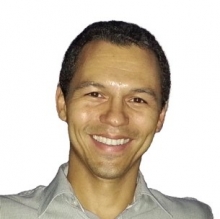CBE & MSE Seminar: Deformation and Failure of Heterogeneous Metallic Glasses

Department of Chemical Engineering and Materials Science
University of Southern California, Los Angeles, California
Abstract: Heterogeneous metallic glasses (MG), i.e. metallic glasses with a heterogeneous amorphous structure, have the potential to considerably increase the ductility of traditional MG while preserving their outstanding mechanical properties. In this talk I will discuss three heterogeneous MGs: nanoglasses (NG), NG composites, and gradient NG. Results for CuxZr1-x NG thin samples indicate a change in deformation mode from shear band propagation to homogeneous flow on grain size reduction. NG nanopillars surprisingly display necking at all grain sizes considered. However, the ductility improvement in NG comes with a concurrent reduction in strength. A partial compromise is obtained using an NG with a bimodal grain-size distribution resulting in an improvement in strength without sacrificing the desired extended ductility of small grain size NG. An even better compromise of strength and ductility is achieved in composite nanolaminates combining alternating layers of MG and a small grain-sized NG. An alternative promising new design consists of a seamless gradient NG combining regions with dissimilar grain sizes. Recent results from tensile loading simulations indicate an overall significant delocalization of plasticity throughout the sample. A superior combination of strength and ductility for gradient NG is found for designs with a hard core (large grain size) compared with gradient NG with a soft core (small grain sizes), in agreement with reports for gradient nanocrystalline systems. The modeling results are in excellent agreement with experimental data and highlight the significant enhancement of plasticity induced with the use of heterogeneous metallic glass architectures and points out to exciting novel applications of these materials.
In the second part of the talk, I will discuss two very different approaches to fabricating photovoltaic devices: using green solvents and the self-assembly of photosystem complexes derived from cyanobacteria.
Bio: Paulo Branicio is currently an assistant professor at the University of Southern California (www.usc.edu) where he runs the Branicio Research Lab (branicio.usc.edu). He obtained his Ph.D. in physics from the Federal University of São Carlos (UFSCar), São Carlos, Brazil. He was a postdoctoral researcher at Louisiana State University and the University of Southern California. From 2008 to 2016, Branicio was an IHPC Independent Investigator, scientist and senior scientist at the Institute of High Performance Computing (IHPC) – A*STAR, Singapore. In 2017, he joined USC as an assistant professor of chemical engineering and materials science. He has co-authored over 70 peer-reviewed publications. His research interests include molecular dynamics simulations of metals and ceramics under extreme conditions, nanostructured high-strength ceramics, metallic glasses, phase-change materials for data storage, and scalable parallel algorithms for data mining and structure analysis. Branicio is a member of the editorial board of Scientific Reports.
Host: Timothy Rupert
